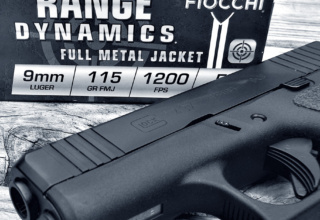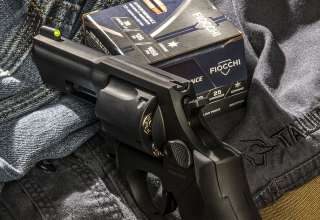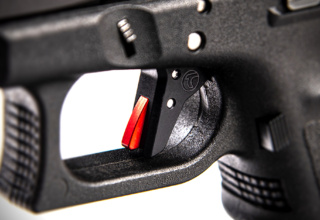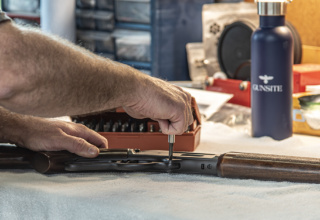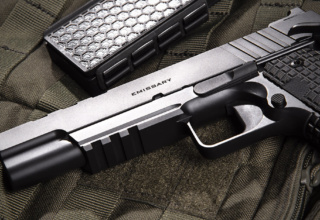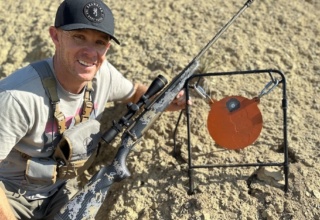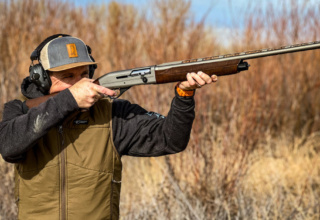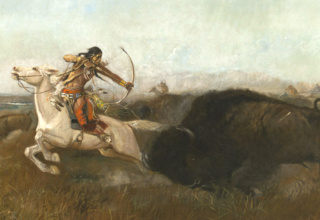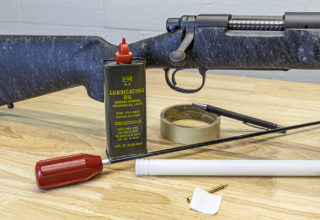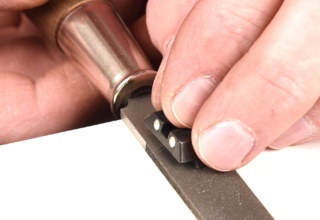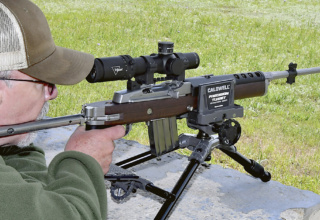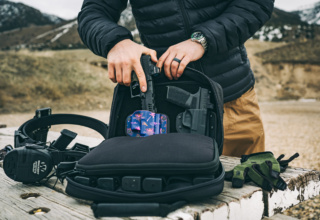Like most hunters, I entered the lifestyle as a kid, nurtured on air guns and eventually weaned on .22s, .410 shotguns, and ultimately centerfire rifles for hunting whitetails. My other passion, from an equally early age, was bowhunting. The skill development required and the continual challenge of getting to within lethal shooting range of animals with a bow calls to me as strongly today as it did decades ago.
I suppose that is why hunting big game with a centerfire rifle has, for me, fallen into one of two categories—putting meat in the freezer or those hunt-of-a-lifetime opportunities where the investment in time and money demands using equipment necessary to put hide on the ground at long distances.
Translation: heading into the woods every year for the traditional whitetail rifle season has become, well…I often feel like I’m just going through the motions.
When it comes to deer, I’m a meat hunter. Don’t get me wrong. The anticipation of meeting up with a mature buck gets me out of bed on those brisk mornings; however, I’ve long ago accepted the reality that the deer I’ll put my tag on will be a sub-120 8-pointer 99 times out of 100. I also know that whatever deer I put my crosshairs on, whether it is standing 50 yards away or 200, it will go down after I pull the trigger.

In short, hunting deer with a rifle has become a mechanical process. I still love the pursuit and the unpredictability of the hunt, but the challenge has seriously diminished over the years. That is why bowhunting continues to thrill me—especially when I hunt with traditional equipment. I must get close and I must always be on my A-game.
In talking with fellow hunters and colleagues, I also know that I am not the only one who feels this way.
So, how do you reignite the passion if you love to hunt with firearms?
Pick up a handgun.
Hunting with handguns is nothing new, of course, but it is traditionally a pursuit practiced by an extremely small and passionate number of hunters when compared to the overall hunter demographics. Part of the reason is tradition—”long guns are just what you use for hunting” is the view of most sportsmen. Another reason is that handguns are usually viewed as a short-range weapon (although many hunters take big-game at surprisingly long distances with a properly set-up handgun) and most hunters don’t want to take the chance of missing their opportunity at The Big One. Perhaps the biggest reason is simply unfamiliarity with handgun platforms and their potential.

As with archery equipment, effectively shooting a handgun requires a lot of practice because everything is different. Zero your rifle for 100 yards on a bench rest and you’re done except for honing your shooting fundamentals and practicing shooting from field rest positions. With handguns, muscle memory, familiarity, technique, and a new level of hand-eye coordination must be developed. Learning to shoot is a challenge unto itself that practitioners find appealing. Combine that with the task of getting within lethal shooting distance of big-game animals and it is easy to see how handgun hunting can ramp up the fun factor.
Getting Started
Most folks who decide to try handgun hunting gravitate toward revolvers. BIG revolvers. There are several reasons why.
Caliber – Handgun hunting requires a cartridge capable of sending a large-caliber bullet downrange at sufficient velocity to deliver lethal terminal performance. For that, there are several standard cartridges that can get the job done. The most common cartridges are the .44 Remington Magnum, .41 Remington Magnum, .454 Casull, and even the .357 Magnum at the low end or the .460 S&W Magnum at the top end. For all-around, get-it-done big-game hunting, the .44 Magnum is the most popular choice.
Handgun Size – Naturally, a handgun chambered for any of these cartridges is necessarily built on a stout platform, with a sturdy frame, robust cylinder, and usually a beefy barrel to match. Varying barrel lengths, though, can be found in handguns chambered for these rounds. This is where “intended use” comes into play.

Accuracy is key to any firearm performance and most factory handguns are pretty darn accurate. It’s really the accuracy potential of the shooter that we need to focus on. A pistol with a 3-inch barrel may be just as accurate (the ability to deliver repeatable point-of-impact) as an identical model with an 8-inch barrel. But I will lay good money all day long on the fact that you, I, the neighbor across the street, and the pro-level handgun shooter will all shoot tighter groups with the 8-inch barrel than the 3-inch model.
First, that longer handgun is going to have a bit more mass, so it will be easier to hold the sight alignment. Second, and more importantly, the longer barrel means that minute off-target holds will produce smaller point-of-impact deviations away from the target than would a shorter barrel. This applies to handguns being shot with an optic or with open sights. When shooting open sights, that longer sight radius (distance between the front and rear sight) is critical for elevating shooter accuracy potential. In all cases, you’re simply going to hit closer to and more consistently on target with a longer barrel than a shorter one regardless of the sighting system you use.

For pistol hunting, though, we add an additional benchmark—that being our responsibility to do everything we can to ensure quick, ethical kills on the game we hunt. So, while that 2-inch barrel home defender .44 Magnum may have the wherewithal to bag a whitetail, the exceptionally short-range effectiveness of that firearm (in the hands of most shooters) makes it an irresponsible choice for a hunting handgun.
Most seasoned handgun hunters will argue that a reasonable barrel length falls between six to ten inches, with eight inches being a rather sweet spot that balances a good sight radius with mass that is manageable for most hunting situations. State game regulations also have something to say about barrel length, with four or six inches typically being the shortest allowed for hunting in most states. It is important, therefore, that you check the regulations in the state you plan to hunt before settling on a handgun.
Action – You’ll notice that most hunting handguns tend to be revolvers. That’s understandable given that there are fewer semi-autos chambered for the favored and proven rounds previously mentioned and the shorter sizes of most semi-autos lend themselves more to close-quarter defensive action than longer-range hunting accuracy. That’s not to say a practiced shooter could not hunt with an appropriately chambered semi-auto (especially if you are hunting close from, say, a ground blind), but overall, it’s better to leave the semi-autos for the work they were intended.

That, then, begs the question…single-action/double-action revolver or single-action revolver. Both are ideally suited for hunting. Your most accurate shooting and your first shot will be in single-action mode regardless. If you develop your pistol shooting skills, you will learn how to quickly re-cock that hammer for a follow-up shot, should one be needed. Were you to rely on double-action, that follow-up shot may be sketchy. Our advice, therefore, is to select the pistol you like the best and that you can shoot most accurately. If that happens to be a single-action revolver, then go for it.
Sighting System – Pistol shooting can be a funny thing when it comes to the sighting system. Many beginning handgunners—particularly those who have not developed their shooting skills with long rifles and iron sights—never bother to learn how well they can shoot with open sights. Instead, they go right to adding an optic. That’s a shame, because open sight shooting can produce some excellent results with practice, and sight acquisition tends to be a lot faster in a hunting situation.
Optics, though, are the way to go for most handgun shooters for the obvious reason—you can be fairly confident in your point-of-impact when you pull the trigger, and that confidence and capability will allow you to extend your lethal shooting range.
Whichever sighting system you choose, know that you will want to become intimately familiar with a bipod, tripod, or shooting stick. That added stability is essential for most shooters, whether they are taking a 25-yard shot or stretching it out to 100 yards or more. For really close-quarter hunting, a shooting support is usually unnecessary, although you will almost always do better with one than without.
The Fun Never Stops
Since hunting or target shooting with a handgun requires a lot of skill development to become reliably proficient, this isn’t a go-to-the-range-once-a-year endeavor. Most hunters check their deer rifle’s zero once before season and never pick it up again until the following year. With a handgun, the practice is continual both for reaching a level of proficiency and for maintaining those hard-earned skills. That means more trips to the range during the off-season. Yay!

Handgun hunting can even be extended through the off-season if you take advantage of the opportunities to pursue non-typical critters, such as hogs, exotics, or even varmints. Hog hunting is perfectly suited for the handgunner because the action is often close-in and the need for mobility great. And if you have a lazy evening after work and want to help a farmer, you’ll find a serious challenge in picking off resident groundhogs with a revolver.
So, if the same-old, same-old hunting routine has you down, try handgunning. You may just rediscover the fun and challenge of hunting.


